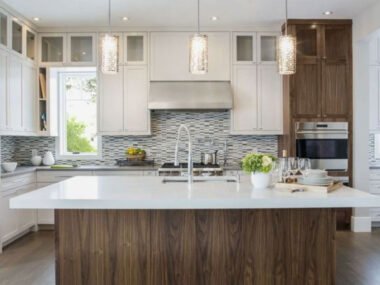Outdoor spaces are becoming more than just yards—they’re being treated as extensions of the home. Homeowners want them to feel inviting, useful, and styled to match their lifestyle. Whether it’s a patio for hosting or a garden path for quiet evenings, outdoor improvements can bring a lot of value.
But excitement can lead to rushed decisions. It’s easy to buy trendy features or start a project without thinking through the details. That’s when problems show up: poor layouts, dead plants, or spaces that don’t match your needs.
These issues don’t always come from a lack of effort—just a lack of planning or guidance. This article looks at common outdoor upgrade mistakes and how to avoid them so your time, money, and energy don’t go to waste.
Skipping the Planning Phase
One of the biggest missteps in outdoor projects is diving in without a plan. You might be eager to get started, but skipping this step often leads to regret. A good design starts with questions: How do you want to use the space? Where does the sun hit in the afternoon? Is there a slope in the yard?
Without this kind of review, people end up with mismatched zones, awkward walkways, or plants in the wrong spots. You don’t need to draw up complex blueprints, but you should map out the basics—zones, access points, materials, and usage patterns.
If you’re unsure where to start, hiring a landscaping company can help. A professional service can assess the space, offer layout suggestions, and guide decisions based on how the property works. They can spot issues early, such as drainage concerns or poor soil quality, and help you prioritize what should be done first. Even if you want to handle the project yourself, a design consultation can give structure to your work and save time later.
Clear planning also helps you budget better. When you know what comes first and what can wait, it’s easier to spread out the cost or do it in phases. That reduces stress and leads to a better outcome.
Ignoring Drainage and Soil Conditions
You can build the most beautiful outdoor space, but if water starts to pool or plants won’t grow, it’s a problem. Drainage is often overlooked, yet it’s one of the most important parts of any landscape.
Low spots, clay soil, or poor grading can send water toward your home or gather in places that should stay dry. This leads to soggy lawns, slippery walkways, or damage to patios and decks.
Soil health matters, too. Some soil drains too fast. Some holds water too long. The wrong mix can cause plants to fail even if you water them regularly. Testing your soil takes minutes and can point you toward the right approach.
Planning ahead for both drainage and soil conditions gives your project a solid base. It’s less about perfection and more about getting the basics right from the start.
Choosing Plants Without Research
A lot of homeowners choose plants based on how they look in the store or in photos. This seems like a simple approach, but it often leads to disappointment. The plant may not survive local weather or might grow much larger than expected.
Some plants need full sun all day. Others burn if they get too much light. Many struggle if the soil doesn’t drain well. Trees and shrubs can also outgrow small yards or cause damage to walkways and foundations if placed too close.
Before planting anything, look up the care needs. Check your region’s hardiness zone and read the plant tag or ask questions at the nursery. You’ll save money and effort by picking options that fit your yard conditions and long-term plans.
Local nurseries are great places to get advice. They often carry plants suited for your area and can tell you how big they’ll get, how fast they grow, and what kind of care they need over time.
Overdoing or Underdoing Hardscaping
Hardscaping includes patios, walkways, fire pits, retaining walls, and anything made from stone, brick, or concrete. These features give structure to a yard and often make it easier to use. But balance is key.
Some homeowners fill too much of their yard with stone or pavement, leaving very little greenery. This can make the space feel harsh or reduce the overall comfort. On the other hand, not including enough hardscaping can result in muddy patches, unclear paths, or wasted space.
Think about how you plan to use the space. A small dining area might need a stable patio, while a walkway through a garden adds both style and access. It helps to map out where furniture, grills, or garden beds will go before adding permanent features. Hardscaping should support how the space is used, without taking over.
Forgetting About Maintenance
An outdoor space might look great at first, but upkeep matters. Some materials need regular sealing or cleaning. Certain plants grow fast and need frequent pruning. Without a maintenance plan, the yard can quickly become overgrown or worn down.
A smart approach is to keep things simple. Choose low-maintenance plants like evergreens, native grasses, or ground covers that help control weeds. Mulch helps reduce water loss and limits weed growth. Composite decking and pavers often last longer than natural wood or basic gravel.
Storage is another overlooked detail. If you don’t have a place for tools, cushions, or garden gear, things end up cluttered or left out in the weather. Deck boxes, sheds, or covered areas help keep your space tidy and your items protected.
It’s also good to revisit your yard a few times each year. Check for wear, trim what’s grown too much, and clean areas that need it. Small efforts go a long way.
Outdoor upgrades can make a big difference in how you use and enjoy your home. But without a plan, it’s easy to run into setbacks. Taking the time to research, organize, and build with the future in mind makes your space more useful and easier to care for. Whether you’re working on a full backyard remodel or just updating a few areas, the right approach makes all the difference.










